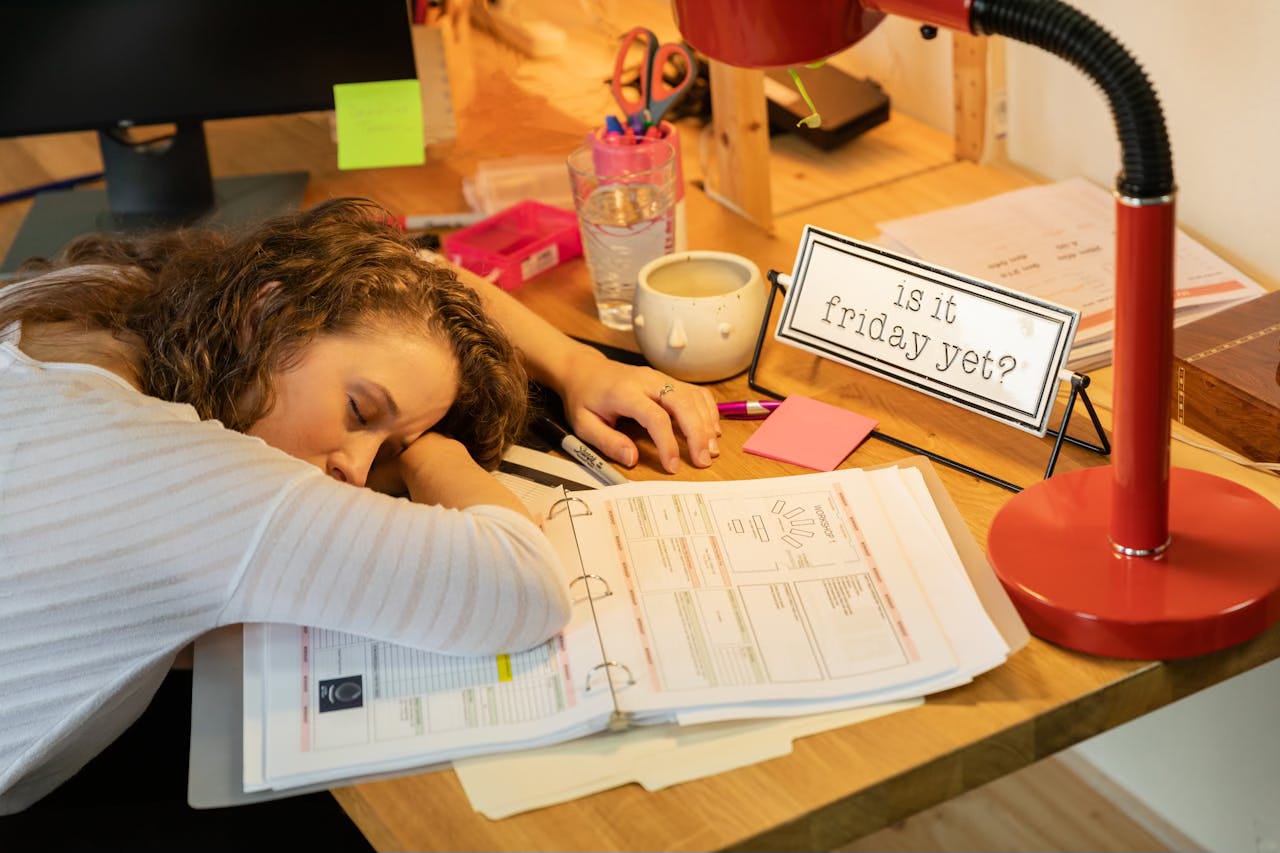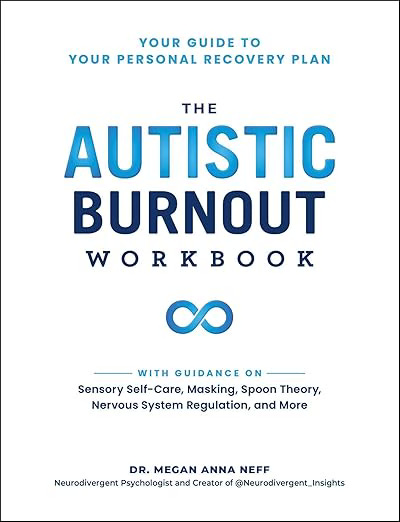How To Build A Sustainable Burnout Recovery Plan
A resource for Autistic and Highly Sensitive People and those who are but don’t know

Hello Lovelies,
For those who don’t know, I burned out after spending too long in a high-stress job. My motivation faded, and every day felt impossible to get through.
Not long after I left, an unexpected illness hit me hard, bringing a long list of unexplained symptoms that left doctors puzzled.
Working was no longer an option. Some days, I barely moved from the couch, lost in a thick fog of exhaustion. Burnout had taken a toll on my body, and I couldn’t help but regret all the late nights and weekends I had sacrificed.
I’ve improved and had better years since those devastating days, but I’ve never fully recovered.
And, strangely, last year, I found myself in a weekly cycle of burnout once again, even though I’m retired now and don’t have the demands of a nine-to-five job. The year-long stress and uncertainty wrought by constant changes and unclear expectations on a previously generous writing platform ultimately took me down.
I felt overwhelmed, exhausted, and entirely spent by Thursday afternoon each week. I needed a full-on three-day recovery period to face a new Monday. Gradually, I lost my motivation for writing, produced minimal content, and also lost a significant income source when the payment rate declined radically at the end of 2024.
Interestingly, my sensory sensitivity flared, too. That eventually led me to realize that I may be experiencing Autistic burnout.
It’s critical to know if you’re a highly sensitive person (HSP) or Autistic when you face burnout because more factors will need to be considered in your recovery. I believe neurotypical individuals can gain valuable perspectives from understanding Autistic burnout, too.
But I didn’t know I was Autistic when I had my first go-around with burnout, and the same could be true for you.
However, I considered myself a highly sensitive person (HSP) for decades.
Psychologist Elain Aron coined the term “highly sensitive people” to describe individuals more sensitive to physical, emotional, and social stimuli. This trait, found in 15-20% of the population, makes HSPs more prone to burnout.
How does this connect to Autism?
I became curious about Autism after reading an article that suggested most people who identify as Highly Sensitive People are highly masked Autistics. The more I learned about Autism, the more I thought, “That’s me.” Eventually, my curiosity led to a diagnosis.
If you’re wondering how that could be, remember, Autism is a spectrum. For many people, the word “Autistic” evokes an image of a young boy who rocks, lacks empathy, and acts in socially awkward ways. But actors Anthony Hopkins and Daryl Hannah are also on the Autism spectrum.
Are HSPs highly masked Autistics? A quick online search shows popular websites like Psychology Today dispute the claim, even if it’s a popular idea in the Autistic community.
Ultimately, the answer is individual. You may feel comfortable as an HSP and leave it at that or explore the possibility of Autism to find out for yourself.
However, since HSPs and Autistics share common characteristics, strategies and exercises to overcome Autistic burnout may be a helpful fit for you.
While listening to a podcast, I was thrilled to learn that Dr. Megan Anna Neff had written The Autistic Burnout Workbook, Your Guide to Your Personal Recovery Plan [affiliate link]. It sounded like just what I needed, and I immediately ordered a copy.
I was already familiar with Dr. Neff’s fantastic menu of mental health and wellness resources for neurodivergent people through her website, Neurodivergent Insights, so I didn’t hesitate.
The 240-page workbook exceeded my expectations.
It’s rich in visuals, making the information user-friendly. The skillful use of color (two shades of blue plus black and gray) makes it easy to distinguish one set of information from another. An abundance of checklists, worksheets, and response boxes allows you to create a recovery plan specific to your needs.
Each chapter stands alone, so you can jump into whichever chapter calls to you and move about in a non-linear way.
The chapters explore:
The specifics of Autistic burnout
A recovery framework
Regulating your sensory experience.
Managing your nervous system
Stabilizing your energy using the Spoon Theory adapted to Autism
Promoting quality sleep
Understanding masking and burnout
Establishing accommodations and boundaries
The book isn’t fill-in-the-blank pages alone. It’s loaded with well-researched information that can help you understand how you got into burnout and how you can get out.
Many books are available on thriving as a highly sensitive person, but I haven’t seen a comprehensive guide to burnout recovery for HSPs. This one might be right for you if you’re highly sensitive, and of course, it’s tailored to the needs of Autistic people.
I love this book and have also had moments when the thought of creating a burnout recovery plan overwhelmed me. But I started with one step: replacing my lost high-quality earplugs and purchasing a set of ear defenders.
You can start with one tiny step, too, or ask for help from family or friends. Just be sure to visit your physician to ensure your fatigue is not due to a medical cause or the result of depression.
I might take one small burnout recovery step a week for three or six months—whatever is manageable for me. We need to baby our burnout, don’t we?
You might be more sensitive than you know if you're suffering from an episode of burnout that feels insurmountable or if you repeatedly fall in and out of burnout. Both highly sensitive people and Autistic individuals are more vulnerable to burnout.
According to UCLA Health, approximately 80% of Autistic females are undiagnosed at age 18. Many women are now receiving an Autism diagnosis later in life—in their thirties, forties, fifties, and beyond.
It’s estimated that highly sensitive people make up 20% of the population. You could easily fall into that category without ever knowing it existed. I didn’t stumble upon the trait until my forties when I came upon Elaine Aron’s work, even though I’ve been sensitive since childhood.
If you’re suffering from burnout, my heart is with you. Let’s recover together.
Related articles:
Until Next Time
Please don’t worry about me. In addition to plotting ways to address my burnout, I’m in touch with my primary care physician and my allergist, who have ordered tests for me.
Fortunately, I’ve been able to stay consistent in writing these messages to you and sharing articles on Substack.
Thank you for reading, supporting my work, and encouraging me. I’m so grateful for your presence!
Much love and best wishes to you, always.
xo Sandra
Invest in yourself! Join 4,000+ beautiful souls committed to living with mindfulness, self-awareness, and ease. Become a free or paid subscriber.
P.S. If you’re a stationery lover, like me, or just need a new notebook, please check out my first collection of composition notebooks. Each design is meant to spark a little joy every time you pick it up.






I chuckled when you mentioned being overwhelmed by the thought of creating a burnout recovery plan. It's like being told you need to organize your chaos, while simultaneously drowning in it! I can totally relate. Sometimes, the idea of adding "self-care" to the to-do list feels like just another chore. It's like, "Oh great, now I have to be stressed about relaxing!" But your honesty about it makes it all feel less daunting. It's a reminder that we're all just figuring this out as we go, and it's okay to laugh at the absurdity of it all. Maybe the first step in recovery is simply acknowledging the humor in the situation and giving ourselves permission to not be perfect at it.
How wonderful that you found something that is working - and working so well for you. Thank you for sharing, Sandra!